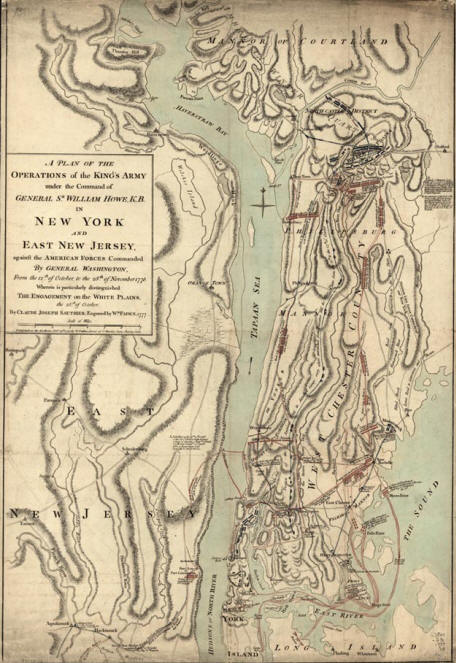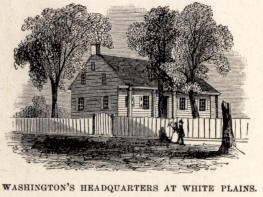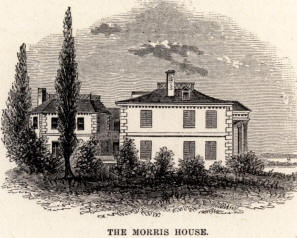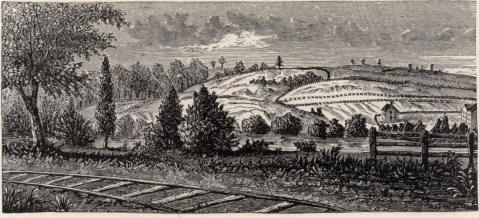Battle of White Plains
|
|
This Site:
|
Original Map of the Battle of White Plains
CHATTERTON'S HILL, FROM THE RAILWAY STATION.The British army advanced to the attack in two divisions, the right led by Sir Henry Clinton and the left by Generals De Meister and Erskine. Howe was with the latter. He had moved with great caution since his landing. Inclining his army to the left, he planted almost twenty field-pieces on the slope south of the village, and under cover of these a bridge was constructed, and British and German troops passed the Bronx and attacked the Americans on Chatterton's Hill. Hamilton's little battery made them recoil at first, but, being reinforced, they drove the Americans from their position. McDougall led his troops to Washington's camp, leaving the British in possession of the hill. Washington's breastworks were composed of cornstalks covered rather hastily and lightly by earth; but they appeared so formidable that Howe dared not attack them, but waited for reinforcements. Just as they appeared a severe storm of wind and rain set in. Washington perceiving Howe's advantage, withdrew under cover of darkness, in the night of October 31, behind entrenchments on the hills of North Castle, towards the Croton River. Howe did not follow; but, falling back, encamped on the heights of Fordham. The loss of the Americans in the skirmishes on October 26, and the battle on the 28th, did not exceed, probably, 300 men in killed, wounded, and prisoners; that of the British was about the same. |
|
|
||
|
|
Site Copyright 2003-2018 Son of the South. For Questions or comments about this collection, contact: paul@sonofthesouth.net |
|
|
Are you Scared and Confused? Read My Snake Story, a story of hope and encouragement, to help you face your fears. |
||

 White
Plains, BATTLE AT.
White
Plains, BATTLE AT.
 At
that council, held October 16, 1776, it was determined to extend the
army beyond the King's Bridge into Westchester county, abandoning
the island, excepting the strong work known as
At
that council, held October 16, 1776, it was determined to extend the
army beyond the King's Bridge into Westchester county, abandoning
the island, excepting the strong work known as
